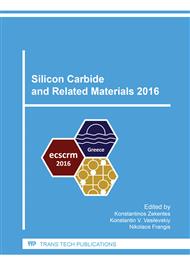p.673
p.677
p.681
p.685
p.689
p.693
p.697
p.701
p.707
Switching SiC Devices Faster and More Efficient Using a DBC Mounted Terminal Decoupling Si-RC Element
Abstract:
Large power modules include several parallel mounted chips per switch to raise active area and current. By the electro-mechanical connection interface, the resulting large parasitic inductance is a huge problem especially for very fast switching SiC devices. This challenge is handled by many approaches, but these recent developments require additional development effort along all aspects of the power module, e.g. smart DBC layout, low inductive top side metallization, special terminal designs or additional pins. In this paper we demonstrate an approach to enable excellent switching performance with con-ventional power module technologies: By using a recently developed monolithic silicon RC (Si-RC) element to decouple the bus bar, this problem can be solved in a very efficient way. The Si-RC element is assembled directly adjacent to the power switches on the DBC. This allows a significant reduction of the SiC chip area by minimizing the power losses caused by the switching transients from the parasitic DC-link and module inductances.
Info:
Periodical:
Pages:
689-692
Citation:
Online since:
May 2017
Authors:
Price:
Сopyright:
© 2017 Trans Tech Publications Ltd. All Rights Reserved
Share:
Citation:


